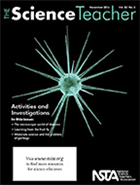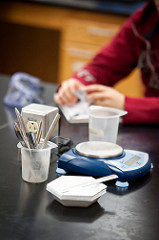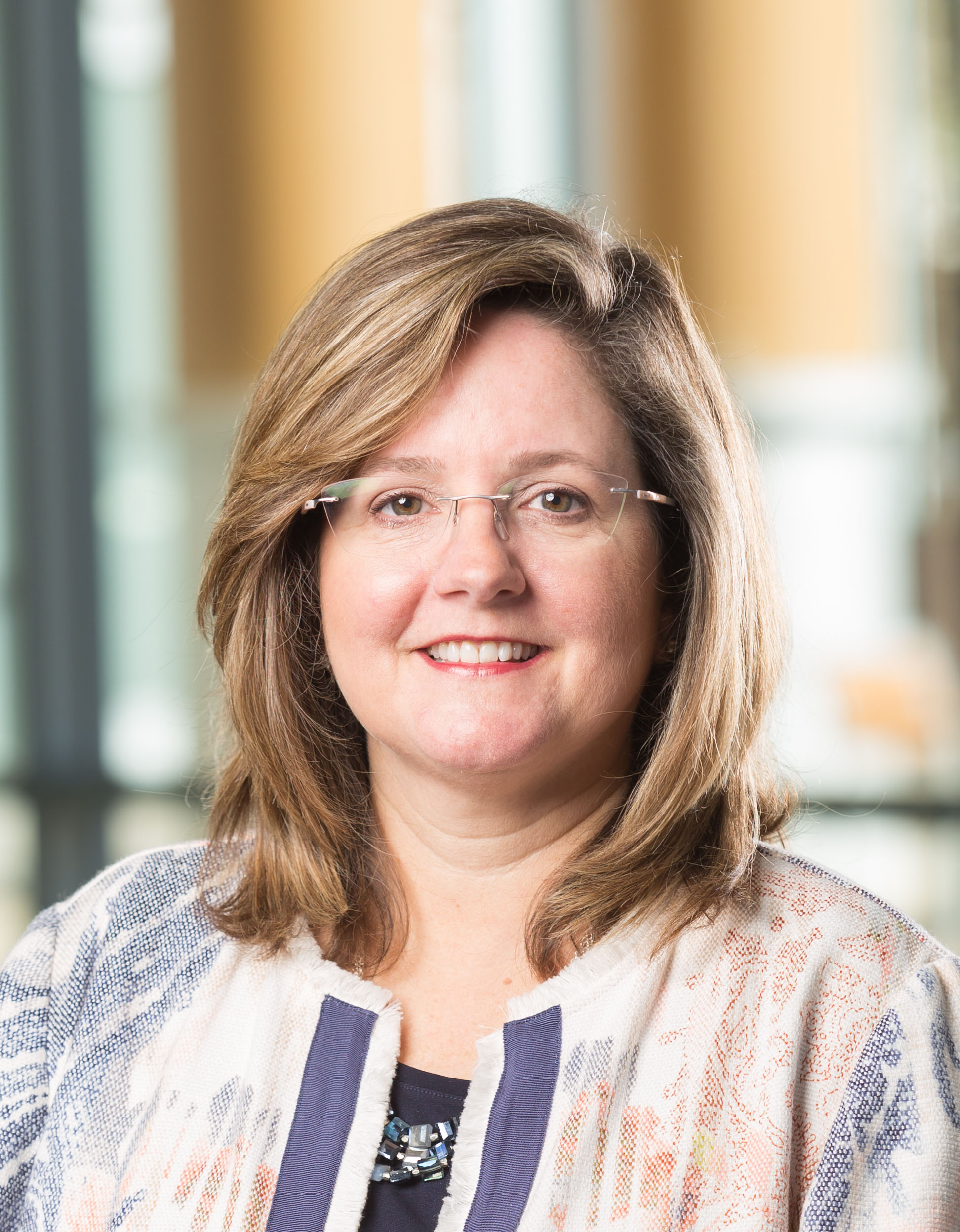Sometimes it seems like everything is in free fall—the stock market, the value of your home, even your outlook for progress in the world. And now you learn this disturbing fact: The Moon is falling! And falling directly toward Earth! But you needn’t be alarmed, because it’s been falling like this for billions of years.
Tangential velocity
A falling Moon shouldn’t be scary because as it falls, it also travels “sideways” with enough speed to keep it from getting closer to us. We call this sideways motion tangential velocity. With sufficient tangential velocity, the Moon and all artificial Earth satellites fall around rather than into our planet.
Newton’s universal law of gravity
Isaac Newton was well aware of orbital motion when he undertook his studies of gravity. He reasoned that a projectile with sufficient speed could circle Earth without touching its surface (Figure 1). He saw the Moon as a projectile

Figure 1. This drawing by Isaac Newton shows that a cannonball fired fast enough from a tall mountain could fall all the way around Earth without touching its surface.
circling Earth while being pulled by gravity.
If somehow gravity between Earth and the Moon suddenly vanished, then—like a stone released from a swinging slingshot—the Moon would fly off in a straight-line path. Newton’s first law of motion tells us that if no force acts on a moving object, the object will continue moving in a straight line. But because gravity does act on the Moon, it falls beneath the straight-line path it otherwise would follow (Figure 2).

Figure 2. Two ways to know something falls: It gets closer to the floor (left) or farther from the ceiling (right). Satellites fall beneath “straight-line ceilings.”
Like the Moon, the International Space Station (ISS) continuously circles Earth. Although a thrusting force put the ISS into orbit, once it attained sufficient tangential velocity it could orbit solely due to gravity. Except for small corrections, the only force keeping any Earth satellite in orbit is gravitational.
How much velocity is needed for orbit?
How much velocity does a projectile need to orbit Earth? The calculation is straightforward if we know two things. The first is that near Earth’s surface, a freely falling object will fall a vertical distance of five meters in its first second, whether it’s simply dropped or tossed at different horizontal speeds (Figure 3). A tossed object, whether a ball or satellite, falls vertically beneath where it would have been if there were no gravity. The dashed line in the figure shows the path that would be taken if gravity were absent.

Figure 3. A horizontally tossed ball falls beneath the dashed line a vertical distance of 5 m in its first second of fall—regardless of its initial velocity.
When we’re considering the trajectory of a baseball or football, it’s okay to assume that Earth’s surface is flat. But for a projectile traveling at extremely high speeds, we need to account for Earth’s curvature. So the second thing to know to calculate orbital speed is that the surface of Earth curves a vertical distance of 5 m for each 8,000 m tangent (Figure 4). Therefore, if air resistance can be neglected, what minimum velocity is needed for a projectile to orbit Earth?

Figure 4. Earth’s curvature (not to scale).
A satellite’s path must match Earth’s curvature
Imagine an ideal super cannon that fires a projectile horizontally across a desert floor. Can you see that it would strike the ground at any speed less than 8,000 m/second? And can you see that if fired at 8,000 m/second, at the end of its first second it would fall 5 m beneath a straight-line path without getting closer to the ground? Furthermore, with no air resistance to slow its speed, it would still be traveling at 8,000 m/second at the end of one second. Additional thought tells you that it will continue moving at 8,000 m/second for any number of seconds and will fall 5 m for each 8,000 m tangent. Its curved path would match the curvature of Earth— and it would be in Earth orbit (Figure 5).

Figure 5. A projectile moving tangentially to Earth’s surface at 8,000 m/s in the absence of air resistance will be in Earth orbit. The curved line shows the orbital path.
Falling around Earth
In the real world, air resistance and obstructions near the surface of Earth would not allow a projectile to maintain its orbital speed. However, if the projectile were above virtually all of the atmosphere, and it reached the necessary tangential velocity, it would fall around rather than into Earth. Such is the case of the ISS. At a height of 330 to 435 km above Earth, and at a speed of 7,660 m/second, the ISS follows a path though space that matches the curvature of Earth. Note that as the altitude of a satellite increases, its tangential velocity decreases, as does the distance that it falls vertically. The ISS travels somewhat slower than 8,000 m/second. The speed of the Moon is considerably less.
Astronauts in the ISS are in a continuous state of free fall—motion caused by

Figure 6. Without a support force, you feel weightless.
Earth’s gravity. Astronauts feel weightless because of the absence of a support force (Figure 6)—not because there’s no gravity! When you step off a diving board, you also feel weightless, even though gravity is obviously acting on you. Gravity at the elevation of the ISS is about 93% of that at Earth’s surface. How about that!
The Moon is approximately 384,000 km from Earth, but even at that vast distance, Earth’s gravity is about 0.03% of that at Earth’s surface—just enough to pull the Moon into an almost circular state of free fall. The Moon has been falling around Earth for billions of years and is expected to continue doing so for billions more.
Now, if the Moon or any satellite were somehow stopped in its tracks, with no tangential velocity, OUCH! Its fall would be devastating. Be glad that satellites have tangential velocities suitable for their distances from Earth. Hooray for Earth satellites! And hooray for gravity.
Paul G. Hewitt (pghewitt@aol.com) is the author of the popular textbook Conceptual Physics, 12th edition, and coauthor with his daughter Leslie and nephew John Suchocki of Conceptual Physical Science, 6th edition.
On the web
See complementary tutorial screencast 50 at www.HewittDrewIt.com. Related lessons are screencasts 45, 46, 47, and 49.
Editor’s Note
This article was originally published in the November 2016 issue of The  Science Teacher journal from the National Science Teachers Association (NSTA).
Science Teacher journal from the National Science Teachers Association (NSTA).
Get Involved With NSTA!
Join NSTA today and receive The Science Teacher,
the peer-reviewed journal just for high school teachers; to write for the journal, see our Author Guidelines, Call for Papers, and annotated sample manuscript; connect on the high school level science teaching list (members can sign up on the list server); or consider joining your peers at future NSTA conferences.






 Dr. David L. Evans is the Executive Director of the National Science Teachers Association (
Dr. David L. Evans is the Executive Director of the National Science Teachers Association (








 All young children are “science” kids. In addition to the traits children are born with, their experiences shape their development (NAS). With many opportunities to engage in science explorations and investigations, their understanding grows and they develop critical thinking skills. Being immersed in an exploration is the best way for young children to learn about the world. Science investigations are powerful experiences in which children use and build their literacy and math skills alongside the practices of science. How can we can make sure that all children get involved in those immersive science experiences where they use their skills to pursue a question that interests them?
All young children are “science” kids. In addition to the traits children are born with, their experiences shape their development (NAS). With many opportunities to engage in science explorations and investigations, their understanding grows and they develop critical thinking skills. Being immersed in an exploration is the best way for young children to learn about the world. Science investigations are powerful experiences in which children use and build their literacy and math skills alongside the practices of science. How can we can make sure that all children get involved in those immersive science experiences where they use their skills to pursue a question that interests them?

 Solutions for these challenges all involve access to professional development, support, and growth for educators. Panel discussions at the May 2016 event “
Solutions for these challenges all involve access to professional development, support, and growth for educators. Panel discussions at the May 2016 event “ Early childhood educators in all areas and settings in the profession can help our nation lift up tomorrow’s leaders when given the tools and resources needed to successfully differentiate and actively engage early learners in science, technology, engineering and math practices. Teachers must be sensitive to children’s cultural and other differences, and be willing and have the skill to adjust instruction to meet children’s needs (NRC). Removing barriers to make learning personalized and relevant help close learning gaps by providing access to deeper learning in these content areas. According to Deborah Phillips, editor of “Neurons to Neighborhoods”, studies have shown that disparities in math and science develop early and can impact high school progress and student achievement in these subject areas.
Early childhood educators in all areas and settings in the profession can help our nation lift up tomorrow’s leaders when given the tools and resources needed to successfully differentiate and actively engage early learners in science, technology, engineering and math practices. Teachers must be sensitive to children’s cultural and other differences, and be willing and have the skill to adjust instruction to meet children’s needs (NRC). Removing barriers to make learning personalized and relevant help close learning gaps by providing access to deeper learning in these content areas. According to Deborah Phillips, editor of “Neurons to Neighborhoods”, studies have shown that disparities in math and science develop early and can impact high school progress and student achievement in these subject areas.